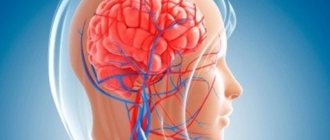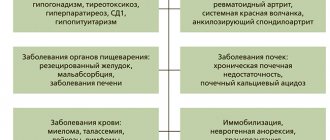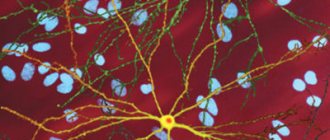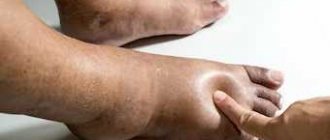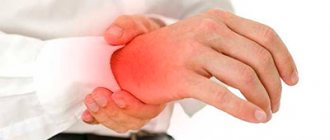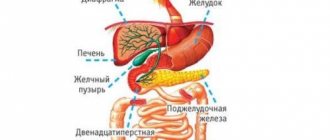Hypokinesia is an extraordinary condition of the human body, in which there is a lack of motor activity, which is manifested by a decrease in pace and limitation of movements.
A decrease in motor activity can occur against the background of mental and neurological disorders, such as Parkinson's disease and other extrapyramidal syndromes, various stupors - catatonic, depressive and apathetic.
In addition, hypokinesia may be the result of a sedentary lifestyle or the nature of work.
Monotonous work with a fixed posture, which reduces the work of muscles or uses only a certain group of them, is often accompanied not only by physical inactivity, but also by hypokinesia. The risk group includes programmers, accountants, operators, cashiers and other professionals whose activities involve monotonous work.
The degree of hypokinesia is determined based on a person’s energy expenditure on muscle activity in a certain period of time. The degree of development of hypokinesia varies from slight to complete cessation of motor activity.
Deficit of motor activity as one of the triggers of hypokinesia
Hypokinesia is a complex of disorders that includes decreased motor activity and slowness of movements.
Pathology usually develops with lesions of the central nervous system. For example, hypokinesia is observed in patients with Parkinson's disease. The effect of hypokinesia on the body:
- adaptive and compensatory reactions decrease;
- the functional and structural basis of movement changes (discoordination, joint stiffness);
- there is a pathological decrease in motor activity with a violation of statokinetic reflexes (maintaining balance);
- Energy and basal metabolism decreases, oxygen deficiency increases.
Life on the move
Between 25 and 40 percent of our body weight is muscle. And the ancient Greek scientist Hippocrates called physical activity “food for life.” The key to the normal functioning of all organs and systems of our body is the active work of all muscles. Man as a biological system is created for active activity.
But our age of rapid technology and information space increasingly takes up our time and leaves no opportunity for the development of muscle activity. The concept of “hypodynamia” (from the Greek words hypo - “below”, “under” and dynamikos - “strong”) is known to everyone today. It means a decrease in physical activity. Along with it, a term is often used that characterizes a general decrease in the tempo and range of movements. This is hypokinesia (from the Greek words hypo - “from below” and kinesis - “movement”). And if the first concept refers to a general decrease in activity, then hypokinesia is characterized by a decrease in the amplitude and strength of movements.
Thus, hypokinesia, like physical inactivity, has a complex effect on our body, leading to decreased performance, fatigue, nervousness, headaches and insomnia.
Causes of hypokinesia
The most common causes of pathology are dysfunction of the basal ganglia and a decrease in excitation processes in the motor cortex. Hypokinesia can also be caused by a lack of motor activity - for example, with prolonged immobilization due to injuries or serious illnesses. A decrease in motor activity is also observed in some mental disorders.
Causes of hypokinesia:
- degenerative disorders;
- taking certain medications;
- vascular disorders;
- injuries;
- intoxication;
- CNS infections;
- metabolic disorders;
- neuromuscular disorders.
Hypokinesia of the gallbladder occurs due to a decrease in its motor-evacuation function. If the gallbladder contracts insufficiently, less bile enters the digestive tract. Patients complain of dull pain in the right hypochondrium without clear irradiation. You can learn more about biliary dyskinesia by consulting a doctor - you can make an appointment on our website.
Types of hypokinesia
The types of hypokinesia are determined from the speed of voluntary or automatic movements, their amplitude, volume and etiology.
Physiological hypokinesia occurs as a result of hereditary preconditions, abnormal development of the body and motor “debility.”
Common everyday types of hypokinesia include conditions caused by a decrease in motor initiative, a sedentary lifestyle, a comfortable lifestyle and a reluctance to engage in physical activity.
Occupational hypokinesia occurs as a result of professional activity caused by production circumstances.
There is clinical hypokinesia caused by the need for prolonged immobilization. It develops when the patient is kept in bed as a result of any illness or injury.
Currently, many students suffer from a form of school physical inactivity and hypokinesia. This is due to improper distribution of school workloads, rest schedules, and lack of time for physical education and sports.
Climatogeographic hypokinesia also often occurs, when a person’s physical activity decreases due to weather and climatic conditions. Quite often it occurs among residents of the Far North.
Based on the form of motor activity disorder, bradykinesia and akinesia are distinguished.
Bradykinesia is determined by the predominance of slow movements. With akinesia, the amplitude and range of movements are limited.
Hypokinesia of the ventricles of the heart
A decrease in the amplitude of movement of the left ventricle is also classified as hypokinesia. Zones of hypokinesia during echocardiography indicate either acute or previous myocardial infarction (post-infarction cardiosclerosis), myocardial ischemia, and thickening of the myocardial walls. Disorders of local contractility of left ventricular segments in patients with coronary heart disease are assessed on a five-point scale:
- Normal contractility.
- Moderate hypokinesia.
- Severe hypokinesia.
- Akinesia (lack of movement).
- Dyskinesia (a segment of the myocardium does not move in the desired direction, but in the opposite direction).
Right ventricular hypokinesia is detected in patients with acute pulmonary embolism (PE). Studies have shown that the presence of right ventricular hypokinesia in patients with acute PE doubles the risk of mortality within the next month. This fact allows us to identify high-risk patients who appear stable.
The effect of hypokinesia on the body
Of course, not all symptoms appear immediately, but the negative impact affects the functions of all internal organs.
The consequences of hypokinesia include:
- general deterioration of human health;
- disruption of the cardiovascular system;
- decreased ventilation;
- stagnation of blood in blood vessels.
Externally, all this manifests itself in swelling of various parts of the body, disruption of the gastrointestinal tract. The amount of joint fluid decreases, and the joints themselves lose their mobility, muscle mass decreases, and bones become brittle.
Just six weeks of bed rest in well-trained and healthy student volunteers resulted in:
- decreased myocardial strength;
- reduction in muscle mass;
- weakening of sexual desire and memory;
- decreased amount of calcium in bones;
- decreased blood volume;
- slowing down reactions;
- lethargy and apathy.
Hypokinesia – definition – what is it?
What is hypokinesia? A general decrease in physical activity is the most simplified definition of hypokinesia, which perfectly highlights the essence of the problem. Hypokinesia as a symptom can be formed on the basis of neurological diseases, for example, Parkinson's disease, mental illness and serious general diseases. Such hypokinesia is often accompanied by progressive akinesia, i.e. complete immobility, paralysis or bradykinesia, that is, slowing down of body movements.
However, today the term "hypokinesia" is much more often used in the context of physical inactivity. Therefore, hypokinesia is considered not as a direct symptom, but as a risk factor for various diseases. It is not for nothing that the human body was built in such a way as to allow physical effort. Various forms of activity have accompanied human life for thousands of years, and the right dose of exercise is an absolutely essential element to maintain the psychosomatic balance of the body.
After poor diet, smoking and alcohol abuse, hypokinesia is the most important direct and indirect cause of reduced life expectancy in health conditions. The consequences of physical inactivity are already noticeable among school-aged children, mainly in their motor development, but also in mental and emotional development. Epidemiological data show that the longer the period of hypokinesia, the more severe the long-term consequences of lack of exercise, even leading to irreversible disability.
About
Physical inactivity is a disease of an immobile lifestyle
So, what is physical inactivity? This is a disease of an immobile lifestyle, manifested in a decrease in the volume of human muscle activity. This phenomenon is observed in all spheres of life, which is largely due to scientific and technological progress and leads to the predominance of static forms of activity. If only 100 years ago 94-96% of all mechanical work on the globe was performed due to human muscular energy, now - no more than 1%. Modern man has reduced physical activity not only in the production sphere, but also for household and communal needs, self-care, walking is limited, and physical activity in the socio-cultural sphere has decreased.
Types of physical inactivity
There are seven types of physical inactivity (I) and the reasons for its occurrence (II), indicated in the picture above.
Forms
The following forms of hypokinesia are distinguished:
- nosogenic , caused by disease;
- industrial and household;
- age;
- iatrogenic , which occurs when a doctor prescribes bed rest for an unreasonably long time.
Prevalence
The researchers analyzed the physical activity of working people and found that 58.2% of those surveyed led a sedentary lifestyle for a significant time, 25.8% had an average level of physical activity, and only 16.0% had a high level. A close relationship between physical activity and age was noted. The largest number of people with a high degree of physical activity was noted in the group under 31 years old - 20.9%, then in the group over 40 years old - 16.0%. The least active were people aged 31-40 years; only 10.6% of people in this age group had a sufficient level of physical activity.
The highest degree of physical activity was noted in the professional group associated with work of moderate severity and intensity (18.6%), the lowest physical activity is typical for engineering and technical workers and operators (8.7 and 10.1%, respectively), in whom the level of physical activity required for production activities small. For this category of workers, non-productive physical inactivity is of a common everyday nature. It is interesting that among the workers whose work was of average difficulty and intensity, accompanied by a fairly large number of movements, the largest number of people engaged in physical exercises was noted, that is, the highest level of physical activity outside of production was found in that production and professional group that was least needs it.
Non-occupational physical activity is associated with the degree of satisfaction with working conditions. It turned out that among the workers who assessed their working conditions as satisfactory, there were 2 times more people leading an active, mobile lifestyle than in the group of people who negatively characterized their working conditions.
Physical activity also depends on social and hygienic living conditions. Under favorable social and hygienic living conditions, people who are actively involved in physical education are more likely to be found.
It is noteworthy that a very small percentage of people from various professional groups do morning exercises. Among them are 11.6% representatives of the medical profession, 12.5% scientists, 9.1% workers, 8.0% engineering and technical workers and office workers, 8.8% employed in the service sector, 4.5% teachers.
Physical inactivity in children
The low physical activity of children is of particular concern. Thus, of the entire duration of a child’s stay in kindergarten, organized forms of physical education account for only 8-14% of the time, and free motor activity - 16% of the time. The number of steps per day turned out to be 12-13 thousand, although normal physical activity per day should average 15 thousand steps for girls 5-6 years old, and 17 thousand steps for boys of the same age.
A study of the physical activity of schoolchildren in Moscow revealed a significant decrease in all age groups. The physical activity of vocational school students aged 17-18 years is also insufficient, especially on the days of theoretical classes, when the dynamic component accounts for only 11.3% of the time per day, and the number of steps barely reaches 11.5 thousand per day.
Preventing the development of the disorder
Preventive measures are based on following the rules of a healthy diet and regular physical activity. It is recommended to take walks and engage in acceptable sports. You don’t have to use an elevator, get to work on foot, etc. All this will have a beneficial effect on the body.
It is important for people with sedentary jobs to take breaks and do at least a minimal warm-up. You should carefully consider improving your workplace, for example, purchasing a chair with a fixed back.
And a few more facts
Numerous studies in this area have confirmed the following data:
- With 49-day hypokinesia in people, there is a significant increase in the concentration of lactic acid in the body tissues and blood.
- After 40 days of limited mobility, athletes experience disturbances in atrioventricular conduction of the heart, shifts in left ventricular systole and a drop in stroke volume.
- With prolonged hypokinesia, the human heart decreases in size, especially its left ventricle.
Thus, maintaining an active lifestyle is essential to maintain health.
Extrapyramidal disorders
23.08.2018
The system of movement regulation at an unconscious level, involved in muscle tone, unconscious motor responses, balance, and automation of stereotypical movements, is called extrapyramidal. Among a huge variety of diseases, neurology also studies extrapyramidal disorders. Extrapyramidal disorders are not just a disease, they are a huge, separate branch of neurology . It is worth noting that there are specialized medical centers that practice treatment only for extrapyramidal disorders of the nervous system . Extrapyramidal disorders are divided into hypokinetic and hyperkinetic.
Hypokinetic disorders are characterized by dopamine deficiency and are classified as variants of parinsonism. Hyperkinetic disorders are based on the abundance of dopamine and are classified as hyperkinesis. It is worth noting that dopamine is synthesized by neurons and is involved in the transmission of nerve impulses and plays an important role in stimulating the so-called human pleasure center. A combination of the above disorders is often possible. For example, hypokinesia can be combined with muscle rigidity, and hyperkinesia with muscle hypotonia.
What is hypokinesia characterized by?
Hypokinesia is characterized by low mobility of the patient, a sharp decrease in motor initiative, sometimes finding himself in an uncomfortable position, a person is in no hurry to change it, while maintaining the ability to fully perform movements and maintaining satisfactory muscle strength. The gait usually looks old, but as the person walks, he begins to move faster. Has difficulty stopping suddenly. With hypokinesia speech is usually monotonous and quiet.
What is hyperkinesis characterized by?
Excessive, involuntary movements are commonly called hyperkinesis. All types of hyperkinesis are characterized by the disappearance of symptoms during sleep and, on the contrary, their intensification during moments of excitement and voluntary movements. Hyperkinesia is based on the death of a network of neurons in the striatum, which sometimes results in unusual, fanciful movements. As manifestations there are grimaces, laughter or crying may appear for no reason.
Due to the fact that the pathology is directly related to dementia, the treatment methods used are varied. A qualified neurologist will select the optimal treatment for the patient. And yet it is worth saying that even neurosurgery does not provide a complete guarantee of recovery.
Published in Neurology Premium Clinic
The impact of physical activity on mental health and well-being
The influence of physical activity on human health is multifaceted. It helps maintain a slim figure, strengthens the immune system and physical condition, and reduces muscle tension. People who play sports have a much better mood, more happiness and increased self-esteem. Sport is associated with physical health and helps maintain mental balance. “Movement can replace almost any medication, but all medications taken together cannot replace exercise.” The verdict of Wojciech Oczko, the court physician of the Polish kings, emphasizes the value of the civilizational problem of hypokinesia.
Because of the many dangers of hypokinesia, international health promotion organizations encourage the promotion of physical activity in all age groups. Analysis of the long-term consequences of lack of exercise has determined that physical activity is a priority element in maintaining and improving the health of the entire population.
Vorobyova Marina
Neurologist of the highest qualification category (work experience 14 years), doctor of neurofunctional diagnostics (work experience 12 years); author of scientific publications on vertebroneurology; participant of scientific conferences on neurology and functional diagnostics of all-Russian and international significance.



